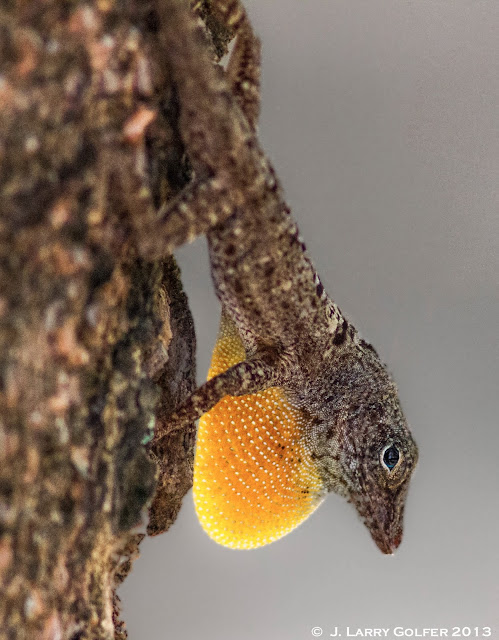Headed out on Sunday for the countryside with cousin Kenny, one of the many family members in Carole's family who winter in San Juan. Loaded with bags of the finest Canon and Sigma super telephoto lenses, we were on the road early (7:30 a.m.), which meant a painful time to arise when on vacation.
First stop, the Bosque estatal de Abajos (State Forest of Abajos). I could be very critical of the poor condition of this State Forest, which was terribly littered and was being used as a drop off point for bags of trash, but, I won't complain more -- we were two guys out in the country beyond the beaches looking for wildlife.
Unfortunately, the wildlife was a bit sparse. Here's what I caught on camera.
 |
| Northern Mockingbird |
 |
| Northern Mockingbird |
 |
"Peek-a-boo" Kingbird
|
That was it in the State Forest for wildlife. I shot this abstract on the way back to the car. Detail from a palm tree:
 |
| Palm tree peeling |
Still, there were beautiful views of the inner island on our drive.
So we moved on the Lago dos Bocas (Lake of the Mouths) and found a bit more to see there. This is a man-made lake serving as a reservoir and containing an island where boats from the dock take you to one of five different restaurants. The boat guys are all our there handing you promo cards and showing their menus. We decided on El Fogon de Abuela (Grandma's Oven.) Here are some scenes from the Lake.
 |
| Lunch |
 |
| Our servers at lunch. Stephanie was our main server, on the right. |
Kenny shooting with the 500mm Sigma lens (affectionately known as the "Bigma." Weights over 4 pounds!
This was a view from the restaurant.
 |
| View from El Fogon de Abuela |
Color view of same shot:
Took this one while on the return ride back to dock on our little boat.
 |
| Another view of the Lake |
Ok, color view of the lake:
 |
| Lago dos bocas |
Finally, something interesting did appear. I heard this bird way up in a palm tree making quite a loud cry, and he stayed hidden in the palm leaves. This was what I saw -- the best so far on this excursion: a Pearly-Eyed Thrasher.
 |
| Pearly-Eyed Thrasher |
And pelicans, of course. But at a fresh water lake? Unusual.
This was a colorful swimmer -- a common moorhen (not so common to me though!)
 |
Common moorhen
|
Saw these guys fishing on the lake:
After a great lunch of grilled red snapper and fried plantains, we took to the road for our trip back to Isla Verde. Tomorrow, Carole and I are off for the Ponce Carnaval and points west. Here's a taste:
 |
| Vejigante with the King of the Carnival |



















.jpg)
+2.jpg)


































